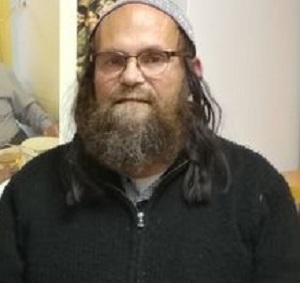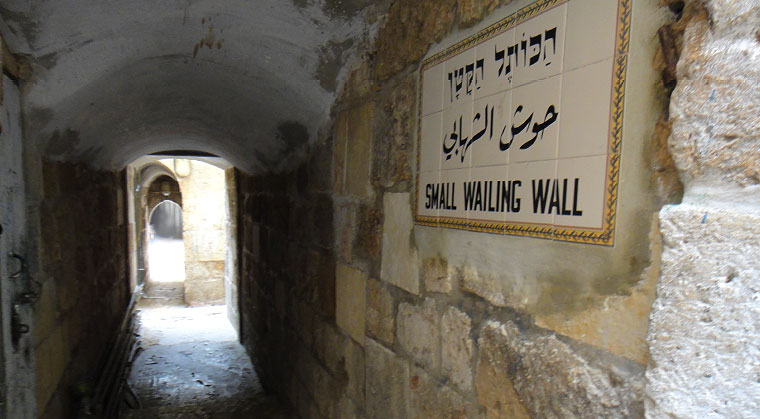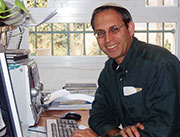Against the Wall


CLOSE QUARTERS “As far as the State of Israel is concerned the rediscovery of the Kosel Hakatan was an unplanned error. The government wants to maintain a clear separation between the Jewish Quarter and Kosel Plaza and the Muslim Quarter — where many Jews also lived in the past — and the concealed parts of the Kosel” (PHOTOS: Mishpacha archives GPO)
W hile Jews flock to the Kosel during these days of mourning the Beis Hamikdash many are unaware that the Western Wall of the Temple Mount is not just relegated to this Kosel Plaza whose stones absorb their tears. In fact the Wall extends hundreds of meters north buried within the Muslim Quarter — which begs the question: Where did the Wall disappear to and why don’t we daven along its entire length?
One reason is because of a little-known-yet landmark decision handed down five years ago by the Jerusalem Magistrate’s Court which ruled that police can forbid Jewish worshipers from blowing the shofar at the Kosel Hakatan a segment of the Western Wall which peeks out of structures in the Muslim Quarter yet which is actually considered to be the point of the Kosel directly opposite and closest to the Kodesh Hakodoshim of the Beis Hamikdash.
The 2012 ruling didn’t happen in a vacuum but was the final verdict in a drawn-out case from six years before regarding an incident on the second day of Rosh Hashanah in 2006. Jews who’d just finished davening at the Kosel noticed a young man in a tallis feet together and holding tightly onto a shofar being dragged by officers up the hill to the police station. The bochur 19-year-old Eliyahu Kleinman was part of a group who davened every Shabbos and Yom Tov at the Kosel Hakatan which is about 125 yards north of the Kosel Plaza near the Iron Gate entrance to the Temple Mount.
According to the police Kleinman created a provocation by blowing the shofar on that spot after prayers were over thus offending the fragile sensibilities of the Muslim neighbors especially as Ramadan that year coincided with Rosh Hashanah. But Eliyahu told a different story corroborated by dozens of fellow worshippers (including his mother Hedy Kleinman a Jewish Quarter resident who made aliyah from Toronto in 1978 and who was in the women’s section). According to them the minyan was in the middle of Mussaf where the custom is to blow the shofar at certain points during the silent Amidah.

The Kosel Hakatan a segment of the Western Wall which peeks out of structures in the Muslim Quarter yet which is actually considered to be the point of the Kosel directly opposite and closest to the Kodesh Hakodoshim of the Beis Hamikdash
People present heard the Druze officer radio his superiors that “these people are in the middle of prayers and I can’t do anything about the young man who’s blowing the shofar.” The answer that came over the walkie-talkie from his Jewish police commander Guy Gilboa: “Arrest the shofar blower immediately even if he’s in the middle of prayer.”
Two officers arrived on the scene and signaled Eliyahu to stop blowing and follow them to the station but the young man was in the middle of Shemoneh Esreh with his feet together and could not respond. When he got to the next section Eliyahu blew the shofar again as is prescribed and that’s when the two officers picked him up and dragged him to the station regardless of the obvious fact that he was in the midst of prayer. He was held there for several hours and charged with disobeying a police officer resisting arrest and provoking the local Arabs and was given a restraining order to stay away from the Kosel Hakatan for the next two weeks (that order was cancelled).
Even Rabbi Shmuel Rabinovitch rav of the Kosel and Holy Sites was shocked. “I checked ” he told a news outlet at the time. “The police officers don’t even know when the prayer starts and when it ends. They didn’t understand that there are several waves of shofar blowing during the Amidah prayer. This is a very grave incident reminiscent of a different time.” (Excerpted from Mishpacha Issue 670)
Oops! We could not locate your form.







